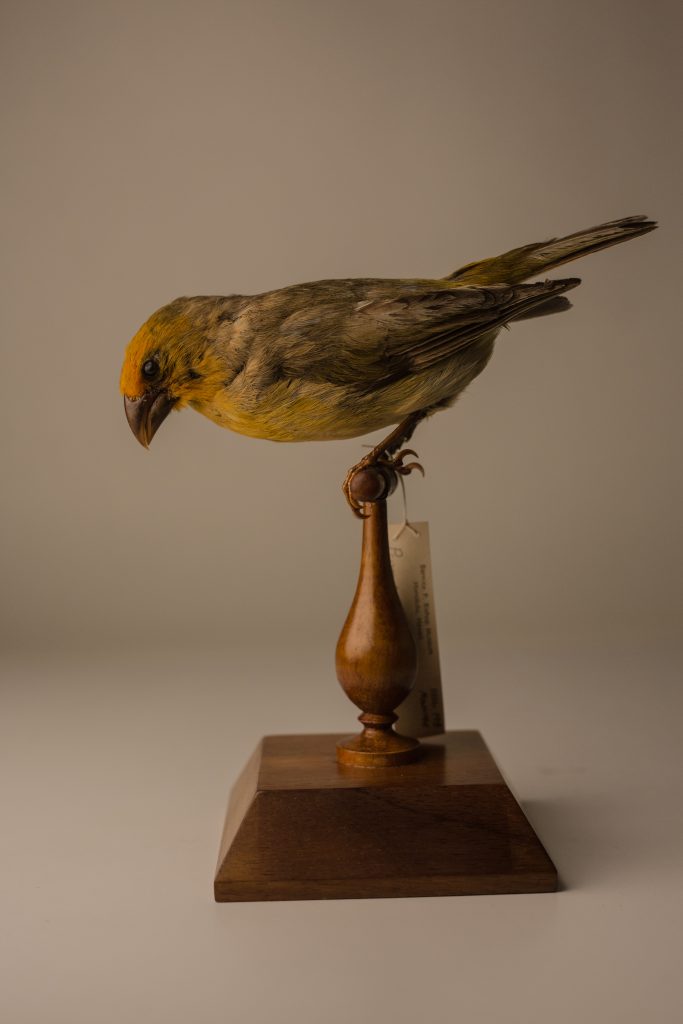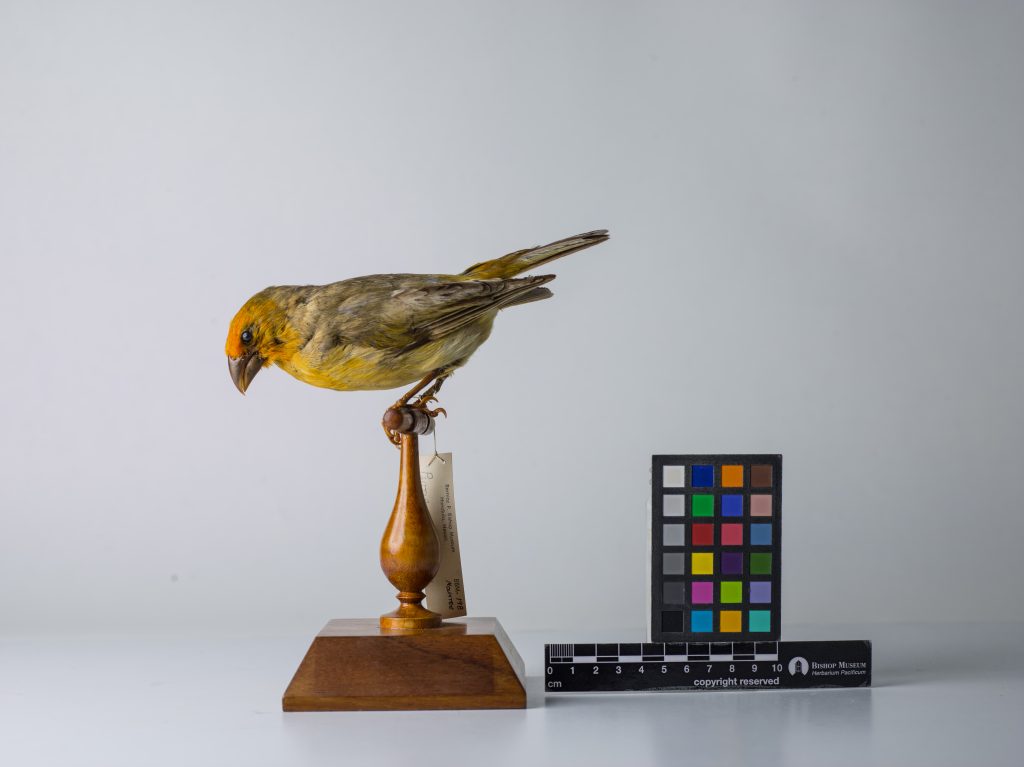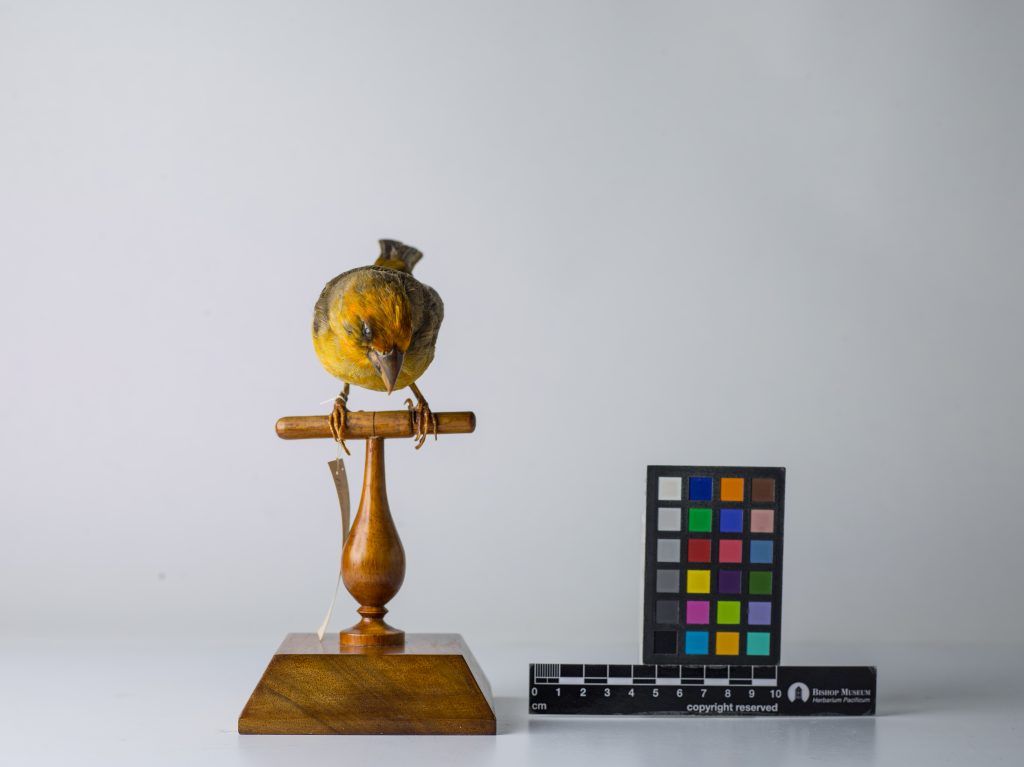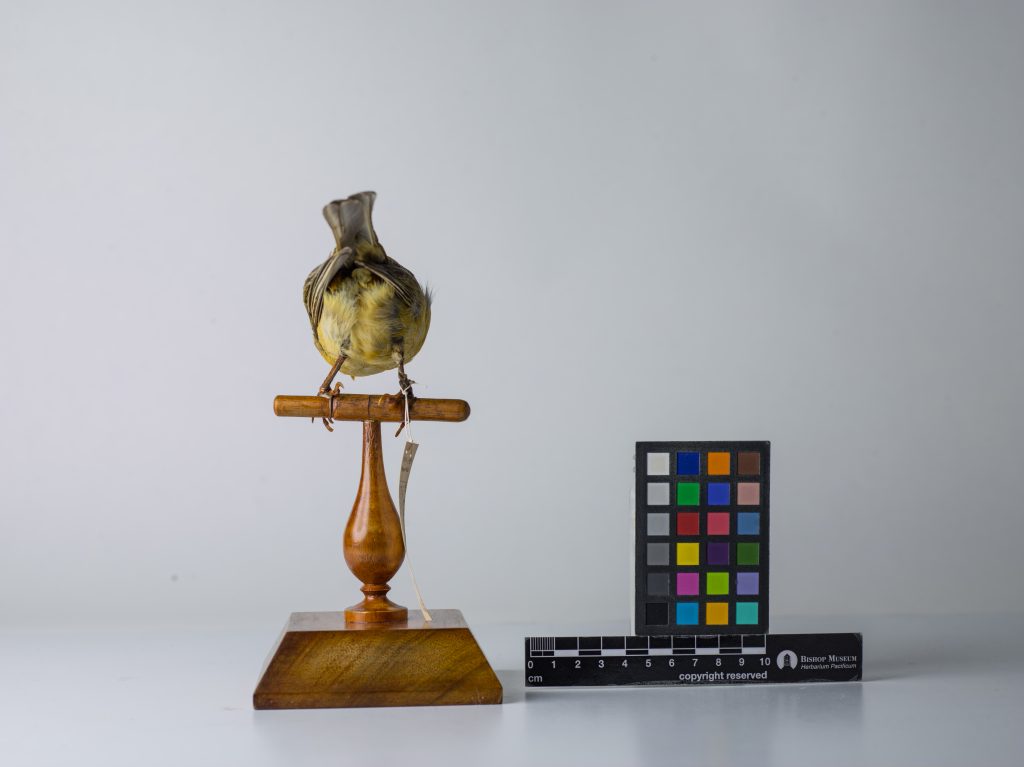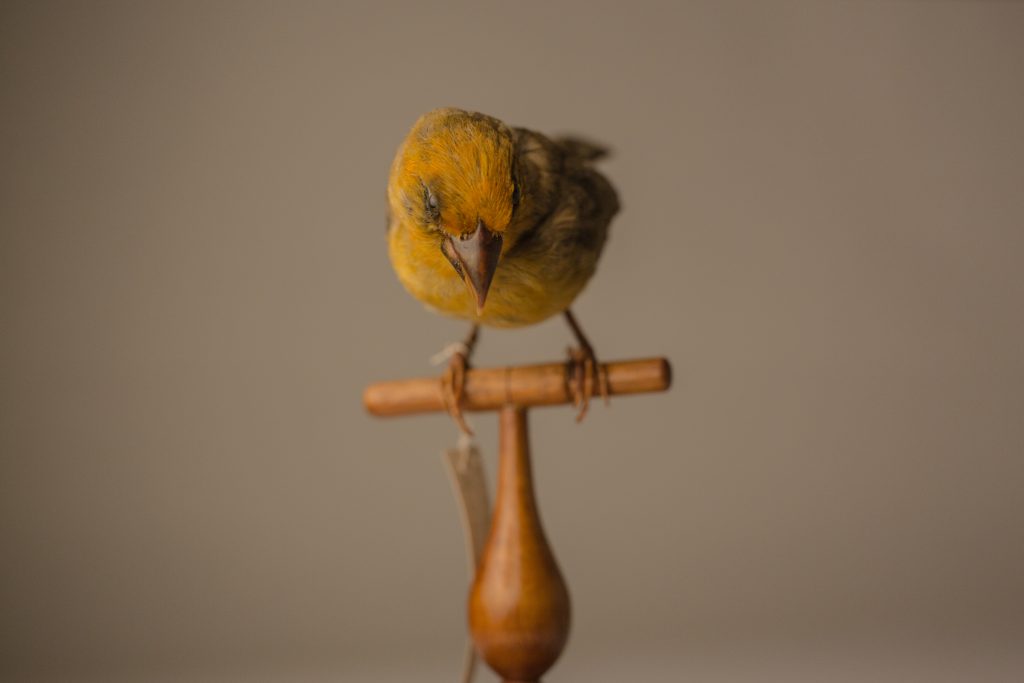Greater Koa-Finch

Names
- Common Name: Greater koa-finch
- Scientific: Rhodacanthis palmeri
Song
No available recordings. The song of the greater koa-finch was a series of 4-6 clear whistled notes. The females occasionally gave a “single deep note” that was given at varying intervals when alarmed. The young male began to sing even before adult plumage was attained. These honeycreepers were said to respond strongly to imitation of voice.
Conservation Status
Extinct. Last confirmed sighting in the wild in 1896.
Species Information
Historically, the greater koa-finch was the largest known honeycreeper. In addition to their size, the greater koa-finch’s solid bill and bright orange plumage separated them from other seed-eating species. The greater koa-finch was a specialist granivore, meaning that they only ate a specific seed. They adapted to eating the pods of koa, consuming the seed’s exterior and interior. It is assumed that the greater koa-finch were widespread in lowland forest, moving to the uplands of Kona upon the historic period.
Distribution
Endemic to Hawai’i Island. Specimens were collected on the southwest slopes of Mauna Loa (Pyle & Pyle 2017).
Habitat
The greater koa-finch honeycreepers were found in dry habitats. They built nests in the tops of koa trees.
Threats
The cause of extinction was likely due to disease and deforestation. The assumption of disease was due to Perkins studies, mentioning swollen feet and missing appendages (Pyle 2017). In addition to greater koa-finch visible alterations, the eradication of upland Acacia koa trees deprived the honeycreeper of their food source (Pyle 2017).
Photos
Additional Resources
Portions of this text were written by Eliot Carter, a 10th grader on Maui with great interest in Hawaiian birds. Volunteering at Bishop Museum for 5 years has contributed to this interest. Eliot’s passion and efforts have supported the findings related to Hawai’i’s extinct forest birds.

